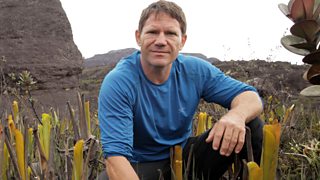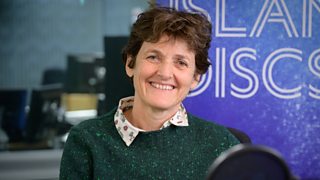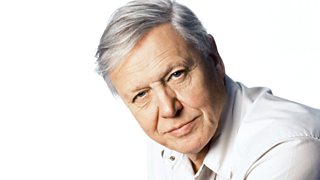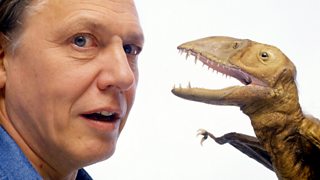12 things we learned about Steve Backshall from his Desert Island Discs
Steve Backshall is a naturalist, broadcaster and author known for bringing audiences of every generation closer to nature through programmes such as Deadly 60, Blue Planet Live and Springwatch. He’s run a marathon in the Sahara, swum with great white sharks and despite breaking his back rock climbing, his appetite for adventure remains undiminished.
This is what we learned from his Desert Island Discs.
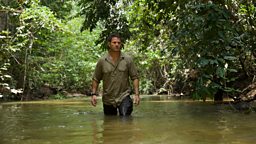
1. Steve thinks lockdown connected many of us to nature in new ways
Steve describes how the stretch of the Thames that he lives beside changed radically during lockdown: one of the busiest waterways in the UK became “totally silent, and [the river] was transformed into what appeared to be a wildlife refuge”. Water birds have bred there this year with what Steve calls “unparalleled success”.
“It was a time when we began to appreciate nature as a nation, and I hope, as a population across the world, more than we ever have before. People were savouring the birdsong in their back gardens. My sincere hope is that we can hang on to those connections,” says Steve. “Because I’ve spent my entire life living and working outside with nature, with animals, I know how much it can give us in terms of wellbeing. It is a potential panacea for so many of our ills. People have been discovering that through lockdown and I hope we don’t lose it now.”
2. Lockdown in Steve’s home has been less tranquil
In January Steve and his wife, the Olympic gold medallist Helen Glover, became parents to twins. “It’s been a wild, wailing lockdown for me, that's for sure,” says Steve. “So many of my friends have been talking about the fact that during lockdown they’ve read all these books, [or] have written their magnus opus, whereas I’ve basically been changing nappies. But Logan, my oldest who is two very soon, he really has switched on to nature and the wildlife… He has massively connected to nature.”
3. Discovering the undiscovered still drives him
Last year Steve travelled to Borneo: “We did an expedition into an area of mountains, about the size of Belgium, which remains pristine, perfect rainforest. In these glorious limestone mountains in the interior of this jungle… we found caves which were unmapped and emblazoned on the walls were hand prints, which have been left there by our ancestors at least 40,000 years ago, when we here in Europe were still living surrounded by short-faced cave bears, and mastodons. But I think the thing that more than anything stood out was the fact that they had placed those handprints in exactly the same place that we would do now. They placed them in the spots where you got the most aesthetic beauty that we would appreciate as modern humans. There is a timelessness about that place. With all the great changes that are sweeping through our civilisation now, there is something uniquely human that remains unchanged, all the way back from prehistory.”
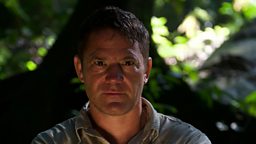
4. His love of the natural world comes from his parents
“I'm very lucky,” says Steve of his childhood. “I grew up on the edge of woodland and the Surrey Heaths. My parents are both massively into the outdoors and they very much led the way for me and my sister. I have incredibly fond memories of sitting around the bonfire with my parents, particularly my dad playing the guitar and singing songs. He's a big, hefty, rugby-playing guy with massive fingers. He was terrible at playing the guitar, but he has a surprisingly soft and beautiful voice - you just wouldn't imagine you'd hear that voice coming out of my dad.” Steve selects The Wind by Cat Stevens as his second disc for the island, because it’s a song his dad used to sing beside the bonfire.
I was frightened. I was lonely. I made endless bad decisions.
5. His parents took a massive gamble when Steve was very young
Steve’s parents worked for British Airways, and he says they were “adventurous in their life choices”. He continues: “When I was about four, my dad pulled into a small farm nearby where we lived, because they were there to get manure for the roses and they came away having swapped their terrace house for a 12 year lease on this smallholding farm. It was a massive, massive gamble for them but it transformed our childhood into something very, very special… it was filled with rescue animals. We had an asthmatic donkey called Barney Rubbles, two psychotic guard-dog geese called Victoria and Albert, there was a little duckling called Twit who would follow my mum around, including sitting in the washing up bowl while she did the washing up.”
6. Steve’s career as an explorer started with not one, but two failures
Steve was an ambitious adventurer from the start, but his ambition outstripped his ability: “I was in my early 20s and I tried to walk across New Guinea, the western half, the Indonesian half, on my own. I failed catastrophically. It was a travesty of an expedition from start to finish. I was frightened. I was lonely. I made endless bad decisions. When I failed to walk across the island, I tried to walk the length of its longest river and I failed at that, too.” His next musical choice was on a cassette he had on his Walkman with him at the time: Fake Plastic Trees by Radiohead.
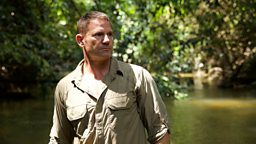
7. A TV company gave him a unique job title: Adventurer in Residence
Following a university degree in English, Steve wanted to find a way to communicate his great passion for “going out and working with wild animals and learning more about them in their environment”. He came up with the idea for a TV nature series. He continues: “I made it myself and sold it to National Geographic. And then they took me on with the greatest job title I have ever had, Adventurer in Residence. It’s preposterous, isn’t it? I can remember having business cards printed with ‘Steve Backshall, National Geographic Adventure in Residence’ written on them and pretty much just going up and giving them to everybody I met in the street.”
If your heart鈥檚 pumping then you probably shouldn鈥檛 be in that situation...
8. Steve’s show Deadly 60 has been shown in more than 150 countries
“When I came up with the original idea that led to [children’s series] Deadly,” says Steve, “I was very calculating about what I wanted it to achieve and that was a universality of appeal. I wanted it to be watched by young people who have no idea they even like wildlife. To do that I use the stuff that everybody is interested in, love it or hate it. You start talking about sharks and snakes, spiders and scorpions and the most venomous this, the most poisonous that, the most toxic this, then people pay attention.”
9. What’s Steve’s secret when working with the deadliest animals?
“You realise that there are certain limits and there are certain rules and that experience and confidence are much more important than bravado - certainly when you're working with things like sharks and crocodiles,” says Steve. “If your heart’s pumping [fast] then you probably shouldn’t be in that situation. You need to be calm. You need to be relaxed. It’s an old cliché that animals can sense fear - well they absolutely can. If you’re working with big sharks, big crocodiles, big cats you have to have confidence. You have to have calm and if not then you really must not be in that close encounter situation.”

10. 2016 was a golden year
Steve married Olympic rower Helen Glover in September 2016, less a month after Helen had won the gold medal in Rio, in the women’s coxless pair event. ”Helen’s Cornish,” says Steve, “so we got married on a cliff top above Prussia Cove looking down St Michael’s Mount. There was no stress because she had just won the Olympics. We had everybody that we loved in one big tent on a perfect blue sky day”. Helen is a two-time Olympic champion (also winning at London 2012), triple World champion, quintuple World Cup champion and triple European champion.
11. Steve nearly died on a river in the Himalayas
On a recent expedition to Bhutan, Steve almost drowned in a kayaking accident. “I dropped down into this kind of gullet of churning white water at the bottom of a small waterfall and I just got it wrong. I didn't put in enough forward momentum and it sucked me back in and then I was in big trouble. I was held in the rapid for about four-and-a-half minutes. This is glacial meltwater, it’s not much above freezing.” Steve says that the difference between this and other near death experiences he’s had is the length of time it went on for. It was “time to process that I would never get to see [his son] Logan grow up, or see [his wife] Helen again”. Miraculously he was rescued by his colleague and friend the kayaker Sal Montgomery who was in the safety kayak. “I survived. We may say day in day out ‘Oh, you're a life saver’ when someone gives you a cup of tea or a chocolate Hobnob, but to say and really mean it, that’s something pretty special. And I know that everything else that happens in the whole of my life is thanks to Sal and there are very few weeks go by that I don't send her a little message to say ‘Thanks Sal’.”
12. So how did this near-death experience change him?
“There's something very liberating about getting a sense of being close to death because it gives you such a greater appreciation of all you have to live for. The sense of gratitude, of friendship, of just how much I owed to [the expedition] team was massive and overwhelming,” says Steve. “I will always see that as being one of those big turning points in my life... I had a much greater appreciation of what I had, what I had to lose and what was really important and increasingly that was fatherhood... I’d thundered round the planet desperately doing these crazy things in an attempt to find out what I was put here for, then I found it in something as simple as becoming a dad and it was such an emotional moment.”

